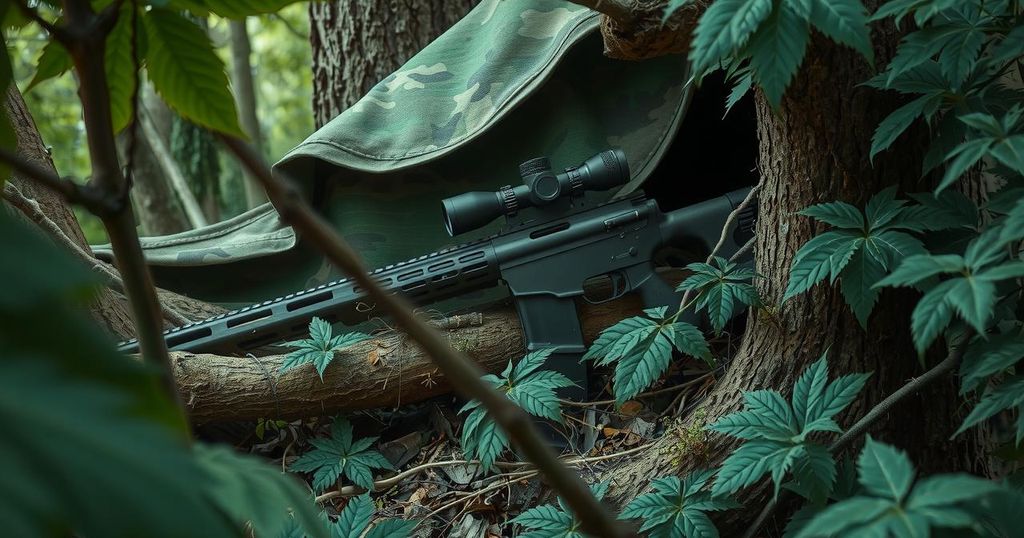The Sniper’s Nest: A Glimpse into Sudan’s Civil Conflict

The article discusses a photograph capturing Sergeant Major Ismail Hassan of the Sudanese Army, who is observing targets across the Blue Nile. The setting, once a luxury apartment, now bears scars of war, illustrating the drastic changes in Sudan following a military coup and civil conflict. The Blue Nile has become a front line in this turmoil, with the presidential palace representing enduring power.
In the photograph titled “The Sniper’s Nest,” taken by Ivor Prickett and Peter Robins, the commander of a sniper team in the Sudanese Army is depicted. His targets are members of the paramilitary Rapid Support Forces, positioned across the Blue Nile, near Sudan’s presidential palace. The image conveys the impact of warfare, as the wall of the sniper’s vantage point, a formerly luxury apartment, shows signs of repeated sniper rifle use, and all light bulbs have been removed to avoid detection.
At the time the photograph was captured, Sergeant Major Ismail Hassan was observing rather than actively engaging in combat. His shooting ear protectors rest on the back of a chair beside his headphones, indicating a moment of pause amid the chaos. A bare mattress is provided for rest in one corner, while Hassan and his men prefer to sleep deeper within the building to distance themselves from the ongoing gunfire.
Reflecting on the area’s turbulent transition, four years prior, this riverside location was a sign of hope for democracy in Sudan. However, a military coup followed by nearly two years of civil conflict transformed the landscape, with the army and its powerful paramilitary partner, the Rapid Support Forces, now in opposition. By March 12, when this photograph was taken, the Blue Nile had effectively become the front line in this ongoing conflict, with the apartment block positioned on the northern bank and the historic presidential palace symbolizing authoritarian power on the southern bank.
This article encapsulates the plight of a soldier navigating the complexities of a civil war in Sudan. Through the visual portrayal of Sergeant Major Ismail Hassan, it reveals the stark transformations in a city once poised for democracy. The juxtaposition of a former luxury setting against its current military use underscores the profound impacts of conflict on society.
Original Source: www.nytimes.com







